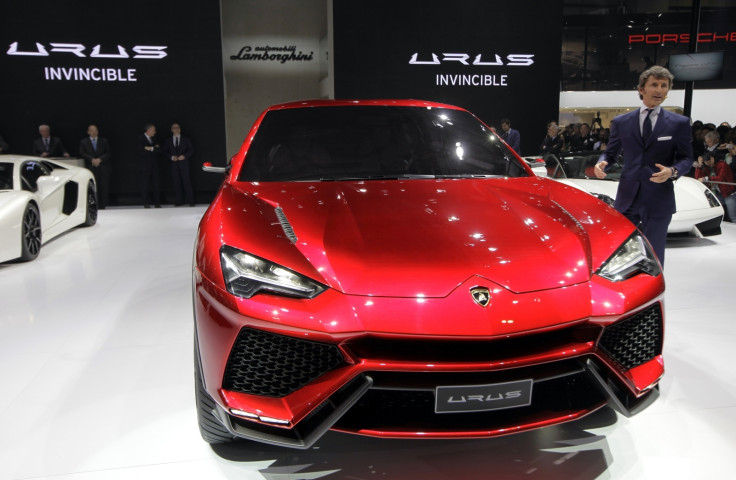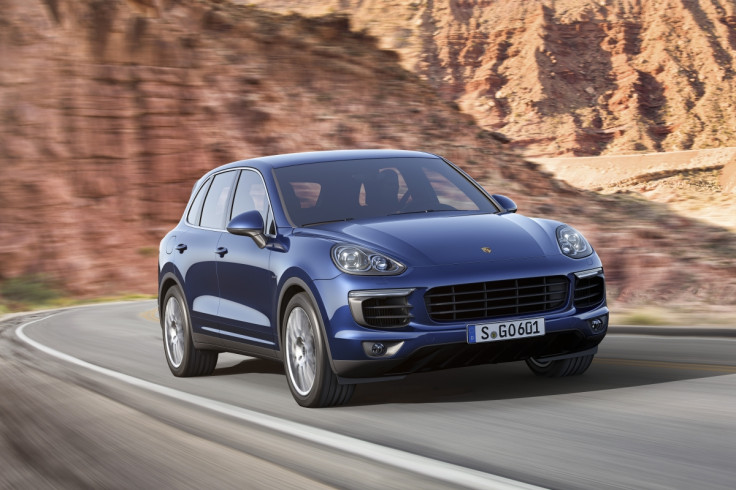Lamborghini joins the boom in supercar SUVs
The automaker's Urus model enters a crowded luxury field.

Supercar makers have long known that parked next to that snarling Lamborghini, racing-red Ferrari, or stately Bentley at some of the globe's toniest addresses is a practical sport utility vehicle. With the SUV market growing by leaps and bounds, they increasingly want in on those profits.
Lamborghini unveils the once-improbable Urus SUV on Monday (4 December) at its headquarters in Sant'Agata, Italy, where the supercar maker owned by the Volkswagen group is expanding the factory to meet utility vehicle demand.
The Urus enters a luxury field crowded with the Mercedes G-Class, the Bentley Bentayga and the trailblazing Porsche Cayenne — and soon to be joined by Aston Martin, Rolls Royce and, in all probability, Ferrari.
Analysts say that the move into SUVs has become a natural fit for most brands, even supercar makers like Lamborghini, despite the risk of alienating aficionados.
"I think if you look at those brands' image, I think you would look at an SUV — especially a Lamborghini — as almost a sell-out move. I don't think that is the case anymore," Jeff Schuster, senior vice president at LMC Automotive in Detroit.
"There is some risk to the purist, who can only see one view of the brand. But as long as they don't move too far out of who they are, a lineup can include an SUV in these brands. I wouldn't have said that five years ago."
From bring nonexistent in 2006, high-end SUVs have more than quadrupled in sales since 2010, from 4,700 units to almost 21,000 units in 2016, driven by the Mercedes G-Class and Bentley Bentayga, according to IHS Automotive.
The entry of the Urus along with the planned Aston Martin DBX and Rolls Royce "High Side Vehicle" is expected to push those numbers up to 29,300 by 2020. Even Ferrari is considering entering the category, with a decision expected early next year, which could leave McLaren as the only hold-out among supercars.
Luxury SUVS are merely following the mass-market trend. SUVs are the fastest-growing overall segment of the car market, tripling in sales in a decade from just under 8 million units in 2006 to nearly 26.5 million units last year. SUV sales are forecast by IHS Automotive to grow by another 28 percent to over 34 million units by 2020.
Before having a true luxury option, IHS automotive analyst Ian Fletcher said, many SUV owners went to private modifiers and tuners to increase performance and add luxury swag to their off-the-line mass-market vehicle. "A lot of manufacturers said, 'Oh, we can have a piece of that,'" Fletcher said.

Porsche proved the market with the Cayenne, and was followed by the Mercedes G-Class, "which went from being utilitarian to being something synonymous with the Kardashians," he said.
The decision to enter the SUV market was a no-brainer for Lamborghini, which as part of the VW group shares luxury SUV platforms with the Bentley Bentega and the Audi Q7, bringing down development costs and increasing profit margins.
"The Urus looks like it will be far more rakish than the SUV range that the VW group has, and far more dynamic," Fletcher said. Trailers of the Urus show the vehicle spinning around the desert, an obvious fob to Middle Eastern brand enthusiasts, but could also appeal to buyers in Africa and Russia, where road conditions in some areas may have discouraged buyers from indulging in the lower-slung sportscars.
"They are aiming to have a vehicle which epitomizes what the brand's core characteristics are: sport, high performance and accessible to customers who had to give up a sports car because they are having children, or just couldn't get into a sports car any more or it wasn't practical," Fletcher said. "It broadens the brand to a wider group."
IHS forecasts Urus sales of 2,900 a year to a peak in 2019-2020, putting it on par with the Lamborghini Huracan. And as with cars in the super luxury segment, the profit margins can be astronomical.
In the United States, SUVS are reshaping the luxury market, outpacing car sales and reaching a new audience, with the appeal strongest in trend-setting cities like Los Angeles, Miami and New York.
"I think car companies want to keep the brand pure, but they cannot ignore the market right now," said Jessica Caldwell, senior analyst at Edmunds. "They are in the business to make money and I think that is why they are going this route."





















